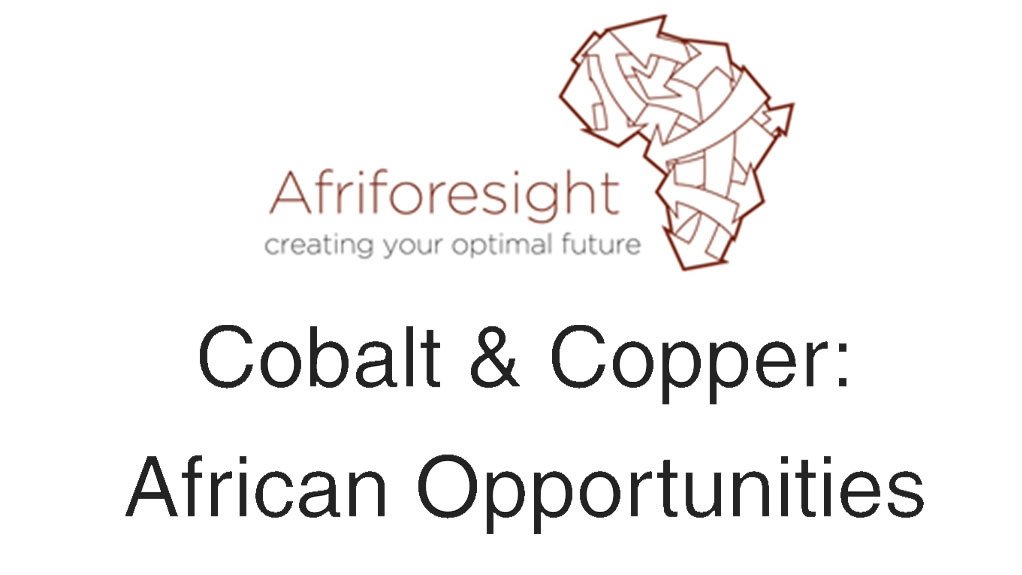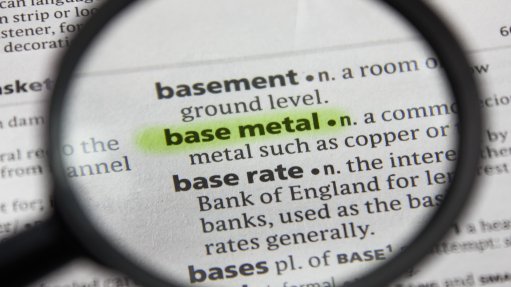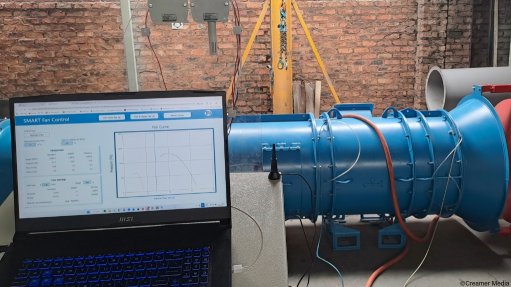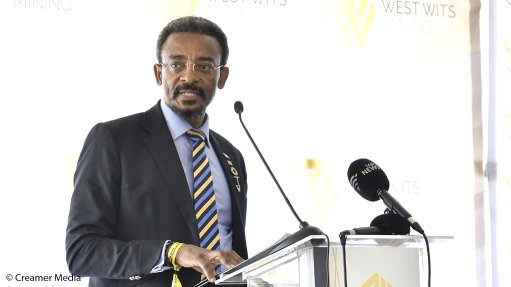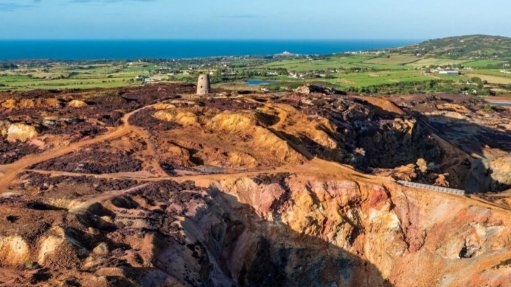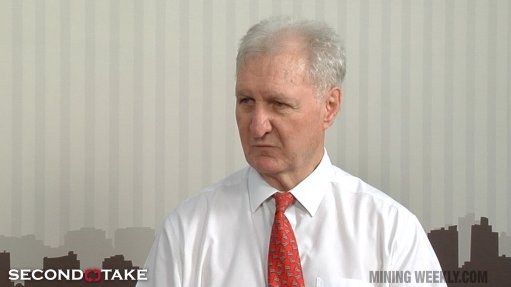Copper, cobalt demand expected to rise
A growing world economy is contributing to an increase in demand for copper and cobalt, speakers participating in Afriforesight’s ‘Cobalt and Copper: African Opportunities’ webinar, held on July 10, noted during a discussion on demand and supply implications, as well as the price forecasts, for the minerals.
Afriforesight chief sustainability engineer Kirthi Ramdhanee explained that copper demand was increasing owing to the metal’s use in electrification, battery technology, renewable energy and water infrastructure applications.
“The urbanisation of emerging economies should contribute to the rising demand as the expansion of power grids is expected in developing countries, and the repair and modernisation of infrastructure is expected in advanced economies.
“We also expect demand growth from renewable power generation and from battery technology as the world moves towards green energy sources,” she said.
Moreover, she explained that the transition to electric vehicles (EVs) was also expected to be a large demand driver for copper, noting that fully electric cars used up to five times more copper than conventional cars.
In EVs, copper is used for the battery, the electric motor and for cable connecting purposes.
She noted that the expansion of EV charging networks would also require significant copper cabling.
Ramdhanee noted, however, that a high volume of copper theft in some countries was expected to result in those countries opting to use aluminium in some applications, especially in vulnerable applications such as publicly accessible wiring.
Nevertheless, she warned that the copper supply gap would widen in the late 2020s onwards if current mining, recycling and consumption rates were maintained, noting that recycled copper supply would be insufficient to meet the growing demand.
With this in mind, she said the growing copper deficit should encourage miners to start new copper mines or expand existing operations.
Further, the growing copper deficit was also expected to put upward pressure on prices, which Ramdhanee said should further incentivise miners to increase production.
“This could result in some governments attempting to shorten permitting cycles and reduce project lead time and should also encourage friendlier policies to attract more investment into copper mining. We expect the overall future demand for copper to be positive and we expect rising supply growth to try and meet demand,” she said.
Ramdhanee also pointed out that about 35% of global copper supply came from South America where production had been increasing.
However, she argued that slower supply growth from South America, owing to supply constraints created by issues such as stricter government regulations and water scarcity, created the potential for African supply to gain more market share.
“We expect production increases from the Democratic Republic of Congo (DRC) and Zambia . . . In the DRC, production should rise as existing projects expand and new projects start up alongside increasing investment in copper mining.
“However, copper mining in the DRC faces some constraints, such as inadequate transport infrastructure and logistical challenges which can cap mining activities and expansion efforts,” she said.
Meanwhile, in Zambia, Ramdhanee noted that hydropower supply disruptions had been a constraint in its copper mining sector. She pointed out that the country was seeking to diversify its energy sources by investing in solar power and other renewable-energy sources.
“We expect the DRC and Zambia to ramp up copper production as miners ramp up or start new projects. And we should see some government incentives and regulations supporting the supply growth from the DRC and Zambia.”
Meanwhile, Ramdhanee explained that there could be an increase in overall copper production to meet the growing demand as the copper price continued to rise.
“And with that, we have the forecast for copper prices, which should increase on the slow supply growth from South America and Africa, alongside improving demand for electricity, water infrastructure, renewable-energy development and as EVs gradually gain market share.
“Towards the end of the period, price increases should be supported by the rising need for global electrification in developing countries, as well as more developed countries expanding their electrical grids due to the rising demand from EV charging networks as well as the need for increasingly larger data centres as new technologies improve, such as artificial intelligence, which requires more copper wiring,” she said.
COBALT
Also speaking at the webinar, Afriforesight base and battery metals analyst Hannah Frösler noted that the largest cobalt demand driver was the battery sector, where cobalt was used as a key component in the cathode of some lithium-ion batteries used in EVs and portable electronics.
“EVs specifically are expected to be a significant contributor to the demand for the remainder of the year and also in 2025. This should continue. This should, however, be capped with efforts to replace cobalt in batteries, with more ethically sourced and environmentally friendly materials,” said Frösler.
In the near term, she said global automotive and electronics demand should remain weak as high interest rates in many regions discouraged consumer demand. These elevated interest rates, as well as the softening of EV sales targets in key regions such as the US and the EU should also hold back EV uptake in these regions, she said.
“Although we do expect demand for EV batteries to increase over the forecast period, the transition should be slower than the market had originally anticipated. Factors contributing to the slower uptake are the softening of the EV sale targets in the US and also in the EU. This should delay the shift away from the internal combustion engines. Another factor is the tariffs placed on Chinese products by the US and the EU.”
Hence, she noted that the demand forecast indicated that, with the current mining rates, a supply deficit, albeit smaller than the deficit expected in copper, may occur in the late 2020s.
Therefore, while demand for cobalt was expected to increase, Frösler said this should be limited owing to a shift away from batteries containing cobalt. She noted that the current supply surplus was expected to continue for the rest of this year and should ease in 2025 as demand rose.
Further, Frösler explained that the DRC accounted for about 74% of global cobalt supply in 2023. Despite the weak prices, she said supply from the DRC was expected to increase.
“With the high copper prices and a promising future demand, this should support cobalt supply.”
While Indonesia was the second-largest global cobalt supplier, Frösler said that, while supply from Indonesia was expected to increase, this should be constrained in the near term as some nickel producers had reduced or suspended output amid low nickel prices.
Hence, she posited that limited supply created opportunities for the DRC to increase its production. However, she explained that the DRC faced issues such as power and logistical constraints which could limit supply.
Additionally, she pointed out that cobalt mining was associated with various social issues.
“These factors are all contributing to the shift away from the use of cobalt in batteries,” she said.
She noted, however, that many mining companies had committed to complying with environmental laws. With the policies in place, Frösler said supply was likely to rise in the DRC.
Meanwhile, she said cobalt prices should continue to trend downwards for the remainder of this year, owing to weaker-than-expected EV demand growth, as well as rising supply from the DRC and Indonesia.
“Thereafter prices should rise on gradually improving EV demand as governments and automakers incentivise EV sales to meet the emission targets. However, demand growth should be capped somewhat by efforts to replace cobalt using batteries with more ethically sourced materials,” she said.
Article Enquiry
Email Article
Save Article
Feedback
To advertise email advertising@creamermedia.co.za or click here
Press Office
Announcements
What's On
Subscribe to improve your user experience...
Option 1 (equivalent of R125 a month):
Receive a weekly copy of Creamer Media's Engineering News & Mining Weekly magazine
(print copy for those in South Africa and e-magazine for those outside of South Africa)
Receive daily email newsletters
Access to full search results
Access archive of magazine back copies
Access to Projects in Progress
Access to ONE Research Report of your choice in PDF format
Option 2 (equivalent of R375 a month):
All benefits from Option 1
PLUS
Access to Creamer Media's Research Channel Africa for ALL Research Reports, in PDF format, on various industrial and mining sectors
including Electricity; Water; Energy Transition; Hydrogen; Roads, Rail and Ports; Coal; Gold; Platinum; Battery Metals; etc.
Already a subscriber?
Forgotten your password?
Receive weekly copy of Creamer Media's Engineering News & Mining Weekly magazine (print copy for those in South Africa and e-magazine for those outside of South Africa)
➕
Recieve daily email newsletters
➕
Access to full search results
➕
Access archive of magazine back copies
➕
Access to Projects in Progress
➕
Access to ONE Research Report of your choice in PDF format
RESEARCH CHANNEL AFRICA
R4500 (equivalent of R375 a month)
SUBSCRIBEAll benefits from Option 1
➕
Access to Creamer Media's Research Channel Africa for ALL Research Reports on various industrial and mining sectors, in PDF format, including on:
Electricity
➕
Water
➕
Energy Transition
➕
Hydrogen
➕
Roads, Rail and Ports
➕
Coal
➕
Gold
➕
Platinum
➕
Battery Metals
➕
etc.
Receive all benefits from Option 1 or Option 2 delivered to numerous people at your company
➕
Multiple User names and Passwords for simultaneous log-ins
➕
Intranet integration access to all in your organisation



